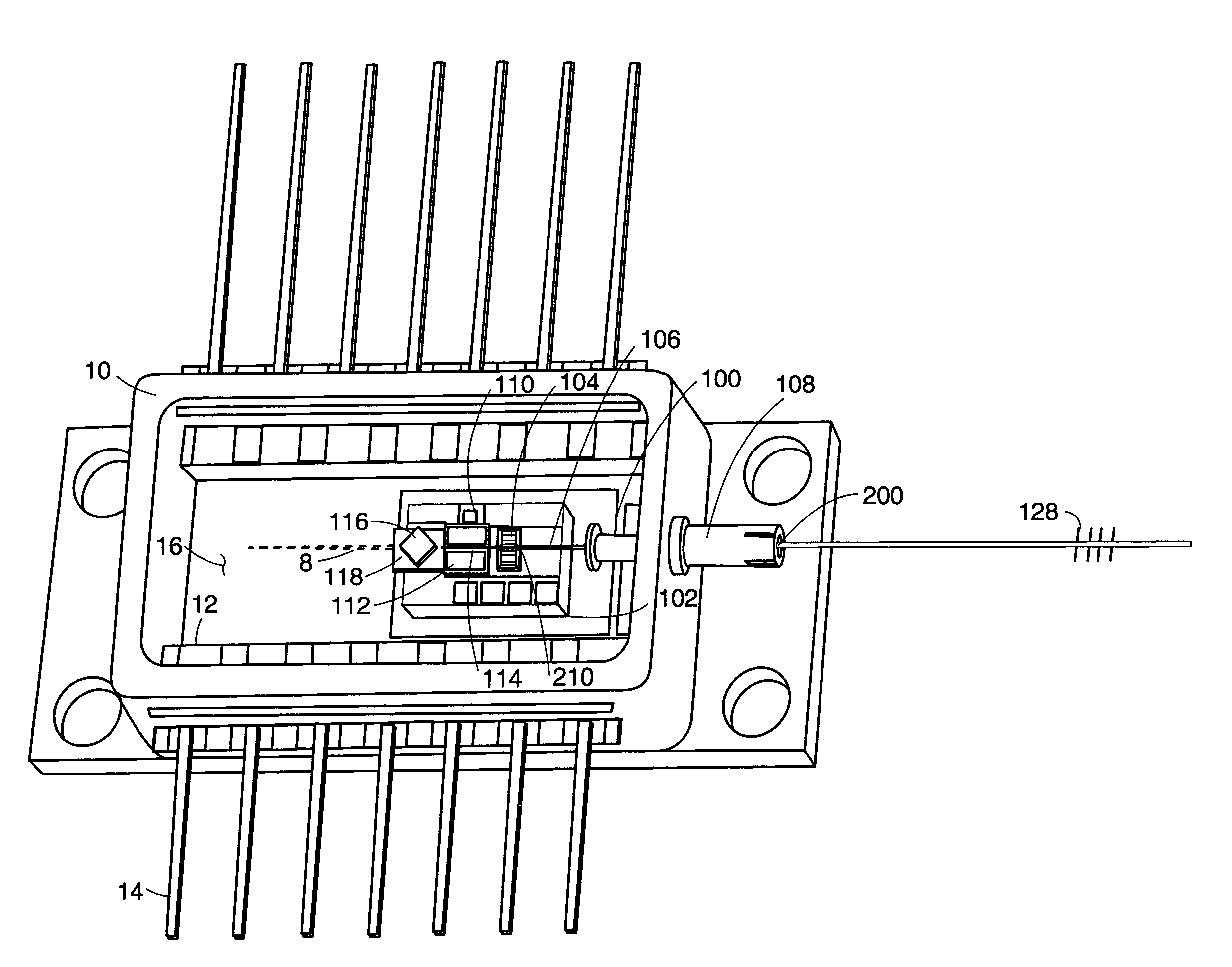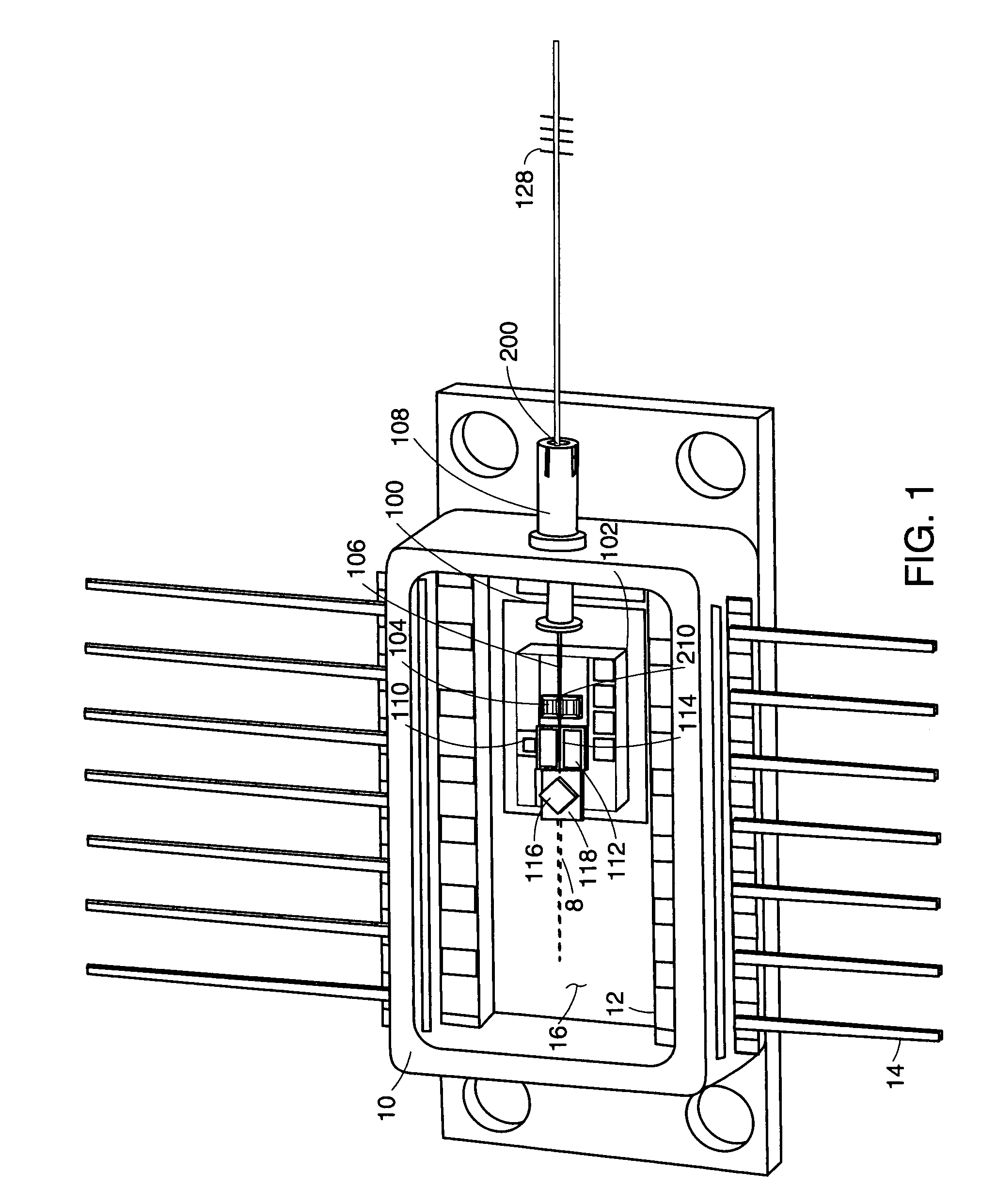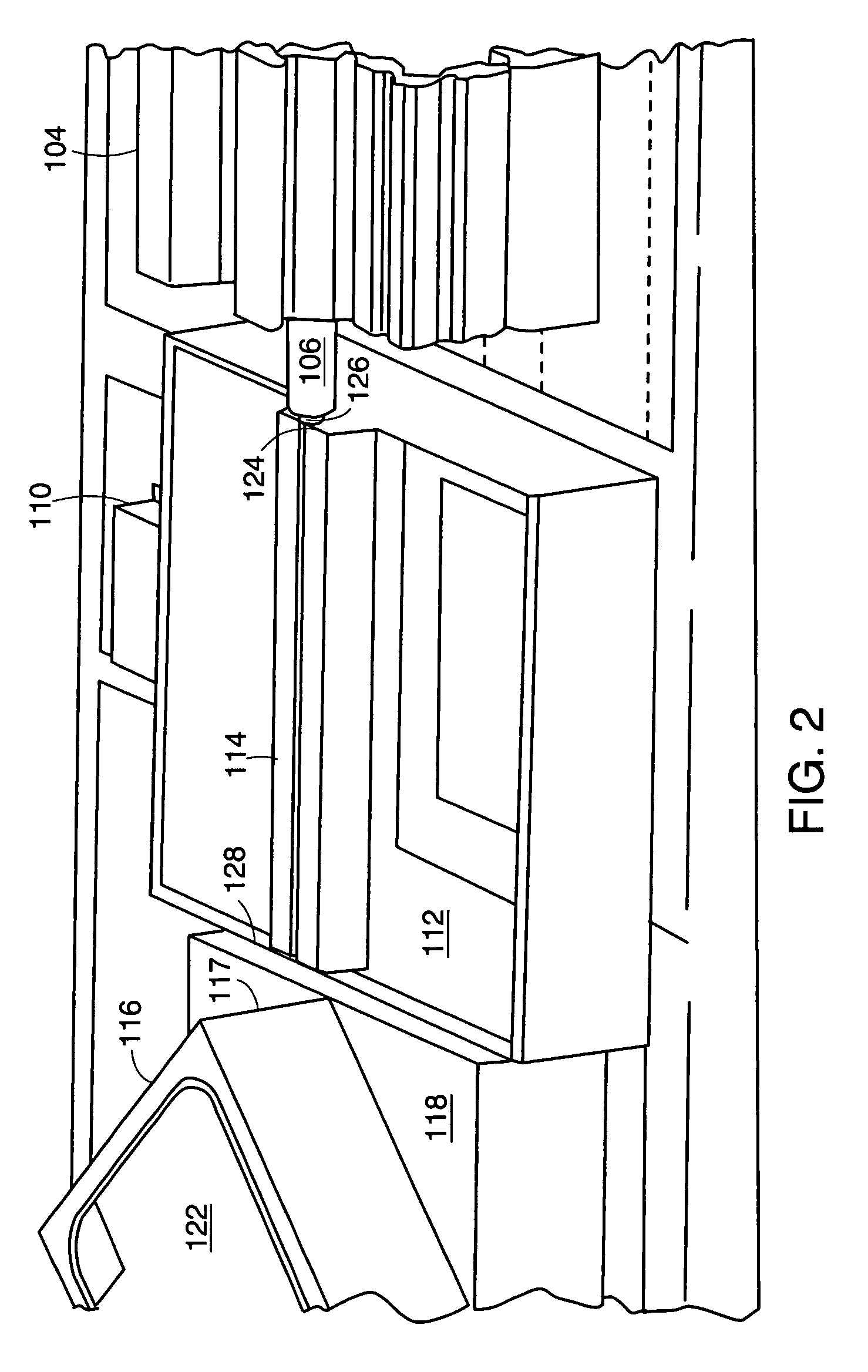System and process for post alignment polarization extinction ratio compensation in semiconductor laser system
a technology of polarization extinction ratio and semiconductor laser system, which is applied in the field of system and process for post alignment polarization extinction ratio compensation in semiconductor laser system, can solve the problems of mechanical stress placed on the fiber, per ratio of optical system, and not the case, and achieve the effect of maximizing coupling efficiency
- Summary
- Abstract
- Description
- Claims
- Application Information
AI Technical Summary
Benefits of technology
Problems solved by technology
Method used
Image
Examples
Embodiment Construction
[0028]FIG. 1 shows a semiconductor laser system, which has been constructed according to the principles of the present invention.
[0029]Specifically, the system comprises a package 10. In the illustrated example, a butterfly package is used in which leads 14 extend laterally from the package. In other implementations, the invention can also be applied to DIP packages where the leads 14 extend orthogonally from the floor 12 of the package 10.
[0030]In the illustrated cooled laser system, a thermo-electric cooler 100 is installed on the floor 16 of the package 10. These coolers are typically driven in response to the temperature within the package, detected by thermistor 110 for example, to maintain a temperature-stable operating environment for the semiconductor laser chip.
[0031]A bench or submount 102 is secured to the cooler 100. In the preferred embodiment, the bench is constructed from a mechanically and temperature stable substance, such as aluminum nitride, silicon, silicon-metal...
PUM
 Login to View More
Login to View More Abstract
Description
Claims
Application Information
 Login to View More
Login to View More - R&D
- Intellectual Property
- Life Sciences
- Materials
- Tech Scout
- Unparalleled Data Quality
- Higher Quality Content
- 60% Fewer Hallucinations
Browse by: Latest US Patents, China's latest patents, Technical Efficacy Thesaurus, Application Domain, Technology Topic, Popular Technical Reports.
© 2025 PatSnap. All rights reserved.Legal|Privacy policy|Modern Slavery Act Transparency Statement|Sitemap|About US| Contact US: help@patsnap.com



